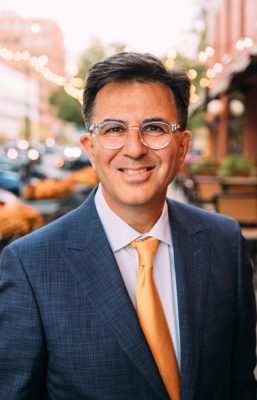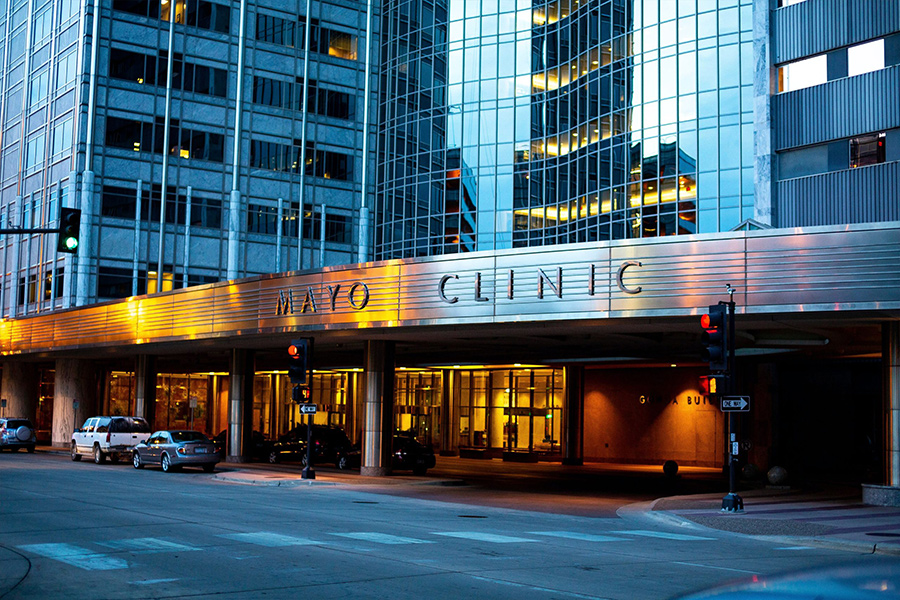American Health Care Cities is a recurring feature at Health Evolution examining the health care market in different cities and regions across the country. How does the health care industry vary across this country? How does it look the same? What are the opportunities and challenges in each city? We’ll be talking with key leaders in some of the most active health care cities in America to better understand if health care, as they say, is truly local.
Other cities covered:
City: Rochester, Minnesota
Metro area population: 226,239
Health care economic benefit: Employs 36,000 people, Mayo Clinic represents more than 65 percent of the 3 million yearly visits to Rochester. Medical technology is the fastest growing sector. * 60 percent of the private, non-farm economic earnings in Olmstead County, Minnesota (where Rochester is located) comes from health care and social assistance. **

Patrick Seeb
Interviewee: Patrick Seeb, Destination Medical Center (DMC) Economic Development Agency, Executive Director
How has Rochester evolved as a health care market?
Rochester is the birthplace of Mayo Clinic, which was established more than 100 years ago by some of the brightest and most innovative doctors of the time. They built this incredible culture and system for delivering health care services, while doing research and delivering education and really becoming a destination. Even 100 years ago, Rochester was the destination for people who needed sophisticated medical care. Rochester is really anchored in that culture. Mayo and the Rochester community has continued to grow. Recently, in The New York Times, there was a columnist who wrote about health care employment and found that Olmstead County, the county that Rochester is located in, has the second largest number of health care workers as a percentage of private sector employment in the country. The level of density of health care far exceeds most communities across the country.
What is the DMC plan and the agency you serve?
The DMC initiative manifested out of the idea that Mayo Clinic is going to grow, it’s committed to growing and they need a city and community to grow with it. They are attracting patients from around the country and the world. They really need a city and a community that can live up to the standard of the Mayo Clinic. The Destination Medical Center concept was born out of that idea and the State of Minnesota recognizes Mayo is a state asset, not just a local asset, worth investing in. They committed to $585 million in public infrastructure to support Rochester’s growth. The state said the first thing we need is a development plan, a vision, and an organization to steward this investment and resource. So, this agency was established. We created a development plan centered around the downtown medical campus district of the city and developed all the systems and procedures to direct funds for public infrastructure to support the city’s growth.
When you’re thinking about building a Destination Medical Center, infrastructure is a little bit different. It’s more than needing sidewalks, sewers and water mains. All of that is true, but it’s also about having good hotels and housing options. That’s been part of our objective is to increase the hotel and hospitality offerings, bolster the downtown retail and entertainment offerings, and create more housing options. But the most significant and game changing work we’re doing is around attracting and developing this “Discovery Square” concept, which is really a district that leverages the innovation coming out of Mayo and the private sector to tap into that intellectual property and translate that into new commercial products and services. Mayo is good at what they call “bench to bedside” research, which quickly goes from the lab to the patient. They’re not particularly good at commercializing, distributing, manufacturing or marketing [those innovations] and they really wanted to invite the private sector into the community, to rub shoulders with Mayo scientists undergoing that innovation, and create products that could go beyond the beyond the reach of Mayo Clinic.
What goals do you have for Rochester as a health care destination?
We have some clear metrics. One metric is the amount of capital investment in Rochester. The goal around that is $5.6 billion worth of new capital investment by Mayo Clinic and others in the downtown area. Secondly, we have a target around 30,000 new jobs. Third, we have a target around tax base—the amount of tax base, by virtue of the growth of the economy. Ultimately, it comes down to creating a better experience for the people who live in Rochester, for those who are patients and/or family members coming here, for employees, and for residential fellows who are coming here to learn and train. That’s a harder metric to define, but it includes working on the transit system to reduce congestion, working on the downtown vibrancy, and diversifying the economy.
How can this plan come to fruition?
It comes to fruition by being in control of our destiny, as opposed to being a victim of it. Every city is going to change. Most cities are a victim to their change. Rochester, through this work, we think is going to be controlling our destiny by directing how we want that change to occur. We are being super intentional about Mayo Clinic opening up relationships around scientific discovery and translation of that discovery into new products and services and being welcoming to the private sector to form partnerships. That’s a new philosophy and it’s a new strategy.
It’s already led to some very exciting things. Companies have planted a flag here that otherwise wouldn’t have been here. Google, for example, has an office here. Epic has an office here. Boston Scientific. Philips, WuXi Diagnostics. They are here, in large part, because Mayo is trying to be more collaborative with the private sector.
What are the biggest challenges health care organizations in Rochester are facing?
In this COVID environment, there’s been a big disruption everywhere. Mayo Clinic had a vision for a telemedicine that was accelerated by a decade because of COVID. That’s really opening up new opportunities for patient care where Mayo will touch ten times as many patients as pre-COVID via telemedicine. They are trying to understand what impact that will have on the number of people [within the organization]. They are also challenged with workforce development. We have a couple of colleges here including a satellite of the University of Minnesota, which focuses on health science.
What are some things health care leaders may not know about Rochester as a hub for health care?
The reason Google is here in Rochester is because they have a relationship with Mayo Clinic on data mining and analyzing patient records to source out information and correlations that can be helpful for future clinical treatment. There is a new level of understanding around machine learning and artificial intelligence that has been applied in other fields but I think it’s going to be increasingly important. Mayo Clinic has 150-plus years of medical records, it’s the most complete and largest repository of medical records, and with the right kind of analytics, we can learn a lot about treatment protocols and best practices to achieve the best outcomes. That’s a significant new avenue for health care—access to information that is then analyzed for improving outcomes. Mayo Clinic has something they call the platform which is a way of creating a connection between other providers around the world with patients from around the world, and sort of being at the center of that universe and providing diagnostic support and outcome-based recommendations.
*Destination Medical Center
** Bureau of Economic Analysis, The New York Times











